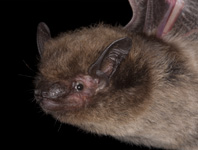Abstract
Unique samples of deep-water sponges of Lake Baikal were collected between 120 and 1450 m depth and their taxonomy and bathymetric distribution were studied. Based on morphological studies with scanning electron microscopy (SEM) and molecular analyses (CO1, ITS) we describe a new species, Baikalospongia abyssalis sp. nov. Spicule morphology of this new species is similar to Palaeoephydatia sp., a species previously known only from fossils in Late Pliocene (3.2−2.8 mya) sediments. Other sponge samples collected were identified as Baikalospongia intermedia intermedia, B. intermedia profundalis, B. bacillifera, B. fungiformis, B. martinsoni and Swartschewskia papyracea, all from the family Lubomirskiidae. Sponge specimens with giant spicules, identified as B. fungiformis, were found at great depths. B.i. intermedia and B. i. profundalis are dominating species at great depth. Light is a limiting factor for distribution of Lubomirskia baicalensis, possibly due to its symbiosis with photosynthetic protists. The current study extends our knowledge on the distribution boundaries of Lubomirskiidae at great depths.
References
Bazikalova, A.J. (1945) The amphipods of Lake Baikal. Trudy Baikal Limnol. Inst. SO AN SSSR 11, 1–440. [in Russian with French summary]
Bukshuk, N.A. & Timoshkin, O.A. (2013) Some features of Baikalospongia intermedia (Spongia: Lubomirskiidae) morphology and vertical distribution in deep-water zone of Lake Baikal.The Bulletin of Irkutsk State University, 6 (2), 128–131.
Efremova, S.M. (2001) Sponges (Porifera). In: Timoshkin, O.A. (Ed.), Index of animal species inhabiting Lake Baikal and its catchment area.Nauka, Novosibirsk, pp. 182–192.
Efremova, S.M. (2004) New genus and new species of sponges from family LubomirskiidaeRezvoj, 1936. In:Timoshkin, O.A. (Ed.), Index of animal species inhabiting lake Baikal and its catchment area. Nauka, Novosibirsk, pp. 1261–1278.
Efremova, S.M., Fialkov, V.A. & Kouzln, V.S. (1995) Methanotrophic symbiotic bacteria are found in deepwater sponges. The Second Vereshchagin Baikal Conference. Irkutsk, Russia. October 5–10, 1995. Abstracts, pp. 62–63.
Itskovich, V., Gontcharov, A., Masuda, Y., Nohno, T., Belikov, S., Efremova, S., Meixner, M. & Janussen, D. (2008) Ribosomal ITS sequences allow resolution of freshwater sponge phylogeny with alignments guided by secondary structure prediction. Journal of Molecular Evolution, 67, 608–620.
http://dx.doi.org/10.1007/s00239-008-9158-5Itskovich, V.B., Kaluzhnaya, O.V. & Belikov, S.I. (2013) Investigation of nuclear and mitochondrial DNA polymorphism in closely related species of endemic Baikal sponges. Russian Journal of Genetics, 49, 839–846.
http://dx.doi.org/10.1134/S1022795413080036
Itskovich, V., Kaluzhnaya, O., Veynberg, Y & Erpenbeck, D. (2015a) Endemic Lake Baikal sponges from deep water. 1: Potential cryptic speciation and discovery of living species known only from fossils. Zootaxa, 3990 (1), 123–137.
https://doi.org/10.11646/zootaxa.3990.1.7
Itskovich, V., Shigarova, A., Glyzina, O., Kaluzhnya, O., Kupchinsky, A. & Borovskii, G. (2015b) Changing of HSP70 content in the Baikal endemic sponges Lubomirskiidae under conditions of hyperthermia. Journal of Stress Physiology & Biochemistry. 11 (4), 128–136.
Kaluzhnaya, O.V., Krivich, A.A. & Itskovich, V.B. (2012) Diversity of 16S rRNA genes in metagenomic community of the freshwater sponge Lubomirskiabaicalensis. Russian Journal of Genetics, 48, 8, 851–854.
https://doi.org/10.1134/S1022795412070058
Kaluzhnaya, O.V. & Itskovich, V.B. (2014) Phylogenetic divesity of microorganisms associated with the deep-water spongeBaikalospongia intermedia. Russian Journal of Genetics, 50 (7), 667–676.
https://doi.org/10.1134/S1022795414060052
Kozhova, O.M. & Izmest’eva, L.R. (1998) Lake Baikal – Evolution and Biodiversity. Backhuys, Leiden.
Mackay, A.W., Flower, R.J. & Granina, L.Z. (2002) Lake Baikal. In: Shahgedanova, M. & Goudie A. (Eds.), The Physical Geography of Northern Eurasia: Russia and Neighbouring States. OUP, Oxford. Chapter 17, pp. 403–421.
Martin, P., Granina, L., Martens, K. & Goddeeris, B.(1998) Oxygen concentration profiles in sediments of two ancient lakes: Lake Baikal (Siberia, Russia) and Lake Malawi (East Africa). Hydrobiologia, 367, 163–174.
https://doi.org/10.1023/A:1003280101128
Masuda, Y., Itskovich, V., Weinberg, E. & Efremova, S. (1999) A study of the vertical distribution of freshwater sponges in the littoral zone of Lake Baikal. Biodiversity, Phylogeny and Environmental in Lake Baikal. OtsuchiMarineResearchCenter: University of Tokyo Press. pp. 25–34.
Masuda, Y. (2009) Studies on the Taxonomy and Distribution of Freshwater Sponges in Lake Baikal. In: Müller, W.E.G. & Grachev, M.A. (Eds.), Biosilica in Evolution, Morphogenesis, and Nanobiotechnology. Springer, BerlinHeidelberg, pp. 81–110.
https://doi.org/10.1007/978-3-540-88552-8_4Mats, V.D. (1993) The structure and development of the Baikal rift depression. Earth Science Reviews, 34, 81–118.
https://doi.org/10.1016/0012-8252(93)90028-6
Namsaraev, B.B., Dagurova, O.P., Zemskaya, T.I. & Golobokova, L.P. (2006) The functioning of the microbial community in bottom sediments of Lake Baikal, with special regard to hydrothermal and gas hydrate regions. Hydrobiologia, 568, 83–85.
https://doi.org/10.1007/s10750-006-0329-3
Pavlova, O.N., Zemskaya, T.I., Gorshkov, A.G., Parfenova, V.V., Suslova, M. Yu. & Khlystov, O. M. (2008) Study on the Lake Baikal microbial community in the areas of the natural oil seeps, Applied Biochemistry and Microbiology, 44 (3), 287–291.
https://doi.org/10.1134/S0003683808030101Rezvoi, P.D. (1936) Freshwater sponges of the USSR. In: Rezvoi, P.D. (Ed.), The fauna of the USSR. AS USSR, Moscow, pp. 1–42.
Schön, I. & Martens, K. (2004) Adaptive, pre-adaptive and non-adaptive components of radiations in ancient lakes: a review. Organisms Diversity & Evolution, 4, 137–156.
http://dx.doi.org/10.1016/j.ode.2004.03.001
Shimaraev, M.N., Verbolov, V.I., Granin, N.G. & Sherstyankin, P.P. (1994) Physical Limnology of Lake Baikal: a Review. BICER Publishers, Irkutsk and Okayama. 81 p.
Sitnikova, T., Kiyashko, S., Bukshuk, N., Zemskaya, T., Khlystov, O. & Moore, M.V. (2016) Stable isotope signatures and distribution of deepwater sponges in Lake Baikal. Hydrobiologia,773, 11–22.
https://doi.org/10.1007/s10750-016-2674-1Timoshkin, O.A. (1995) Index of animal species inhabiting Lake Baikal and its catchment area. In: Timoshkin, O.A. (Ed.), Lake Baikal. Nauka, Novosibirsk, pp. 1261–1278.
Timoshkin, O.A., Ivanov V.G., Obolkin, V.A. & Sherstyankin, P.P. (2009) Water temperature dynamics in the shallow zone of western coast of southern Baikal in the area of interdisciplinary test site Berezovy as revealed from non-stop measurements by onset StowAwayTidbiT loggers. In: Timoshkin, O.A. (Ed.), Index of animal species inhabiting lake Baikal and its catchment area, vol. 1. Lake Baikal, Vol. II. Book 1. Nauka, Novosibirsk: 727–731. [in Russian]
Van Soest, R.W.M, Boury-Esnault, N., Hooper, J.N.A., Rützler, K., de Voogd, N.J., Alvarez de Glasby, B., Hajdu, E.,Pisera, A.B., Manconi, R., Schoenberg, C., Klautau, M.,Picton, B., Kelly, M.,Vacelet, J., Dohrmann, M., Díaz, M.-C., Cárdenas, P. & Carballo, J.L. (2016) World Porifera database. Avaliable from: http://www.marinespecies.org/porifera (accessed 3 November 2016)
Veynberg, E. (2009) Fossil Sponge Fauna in Lake Baikal Region. In: Müller, W.E.G. & Grachev, M.A. (Eds.), Biosilica in Evolution, Morphogenesis, and Nanobiotechnology. Springer, BerlinHeidelberg, pp. 185–205.

